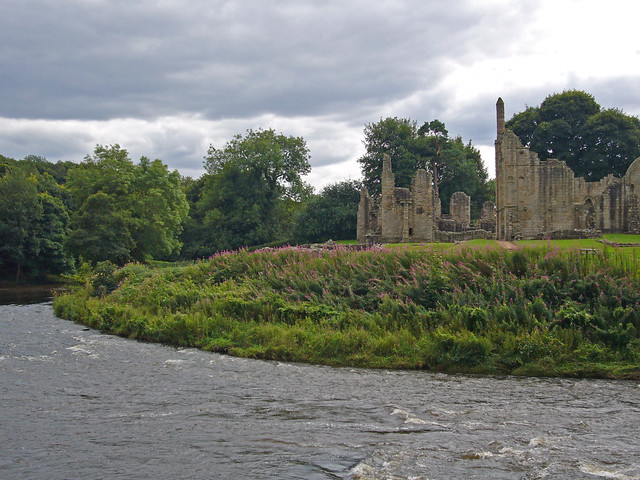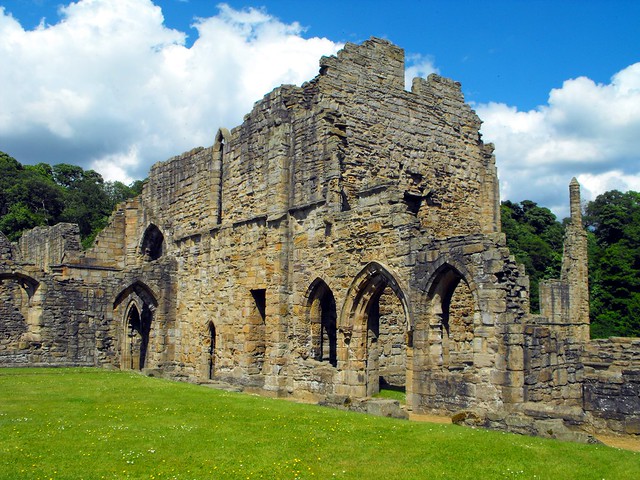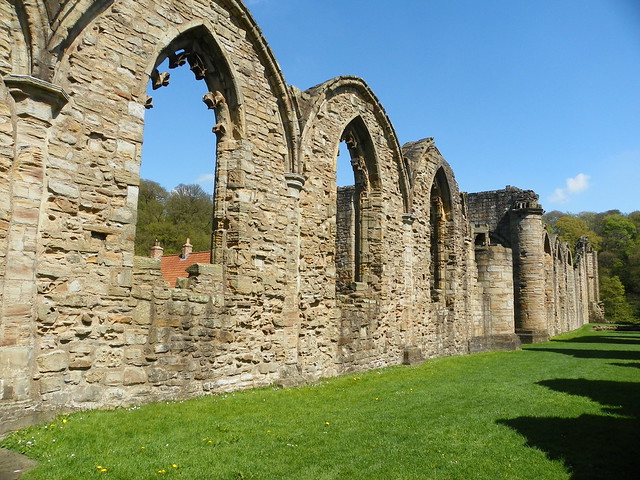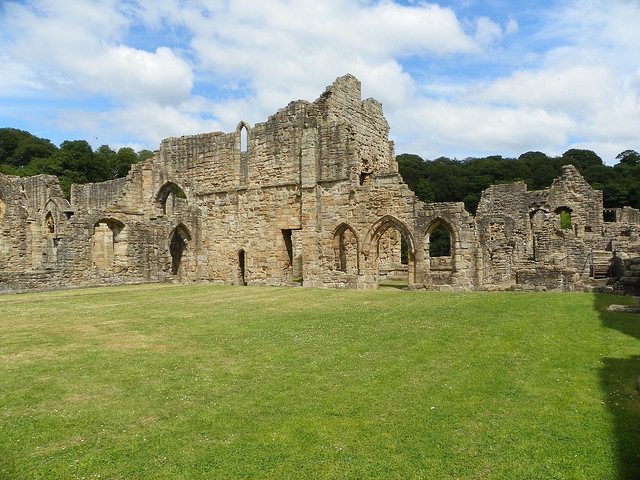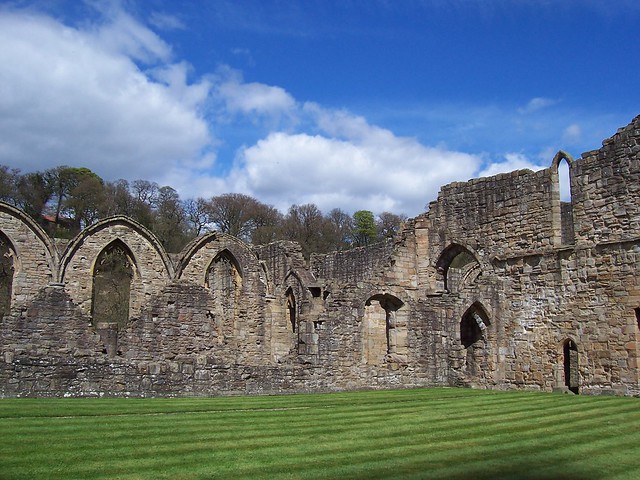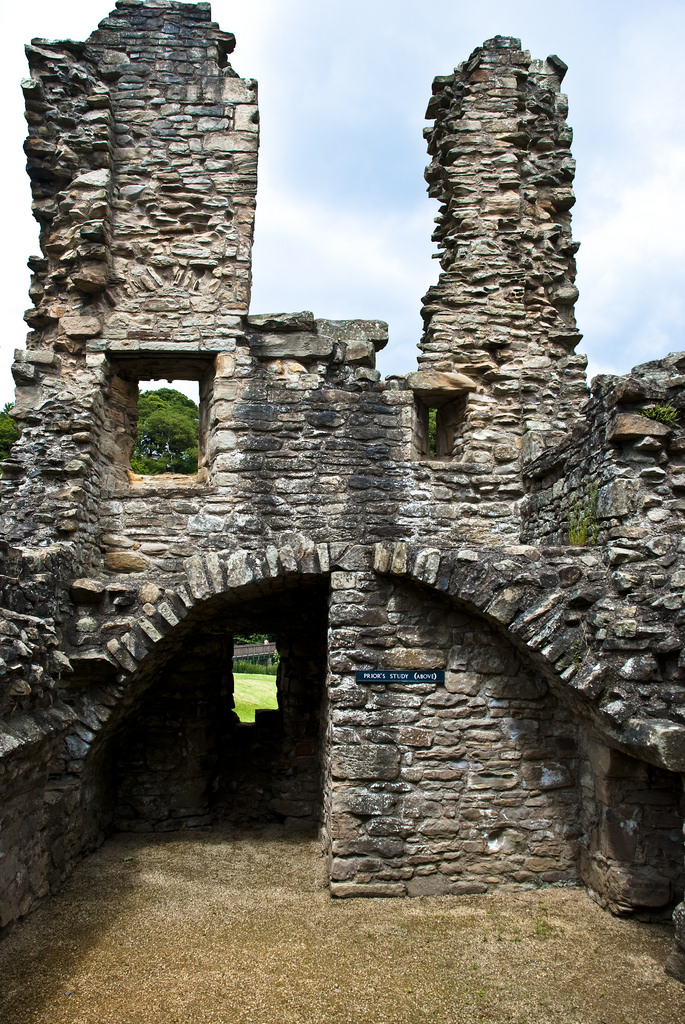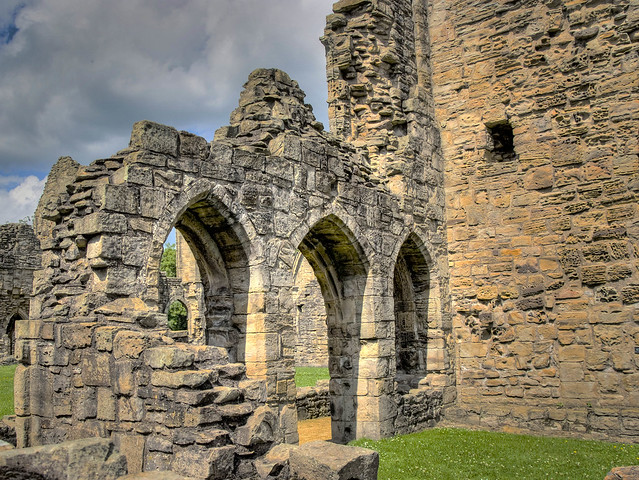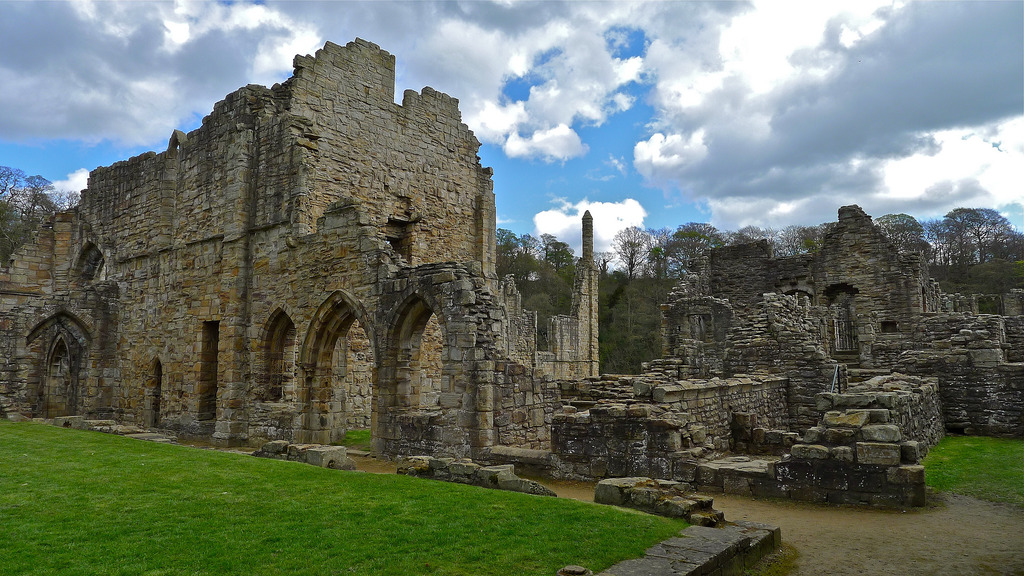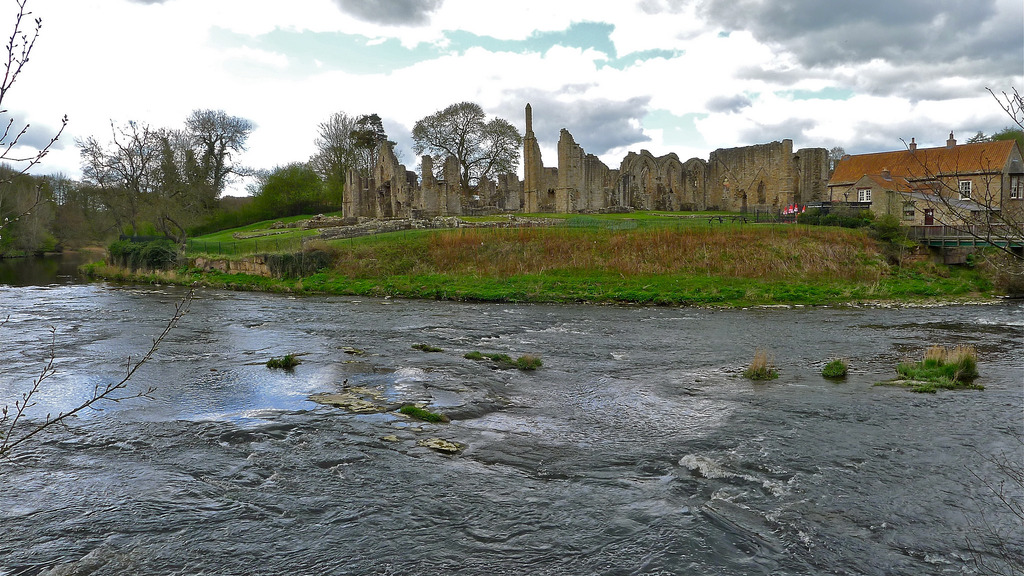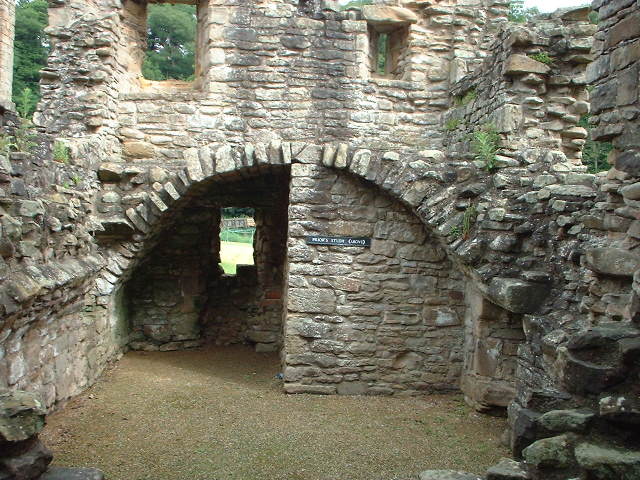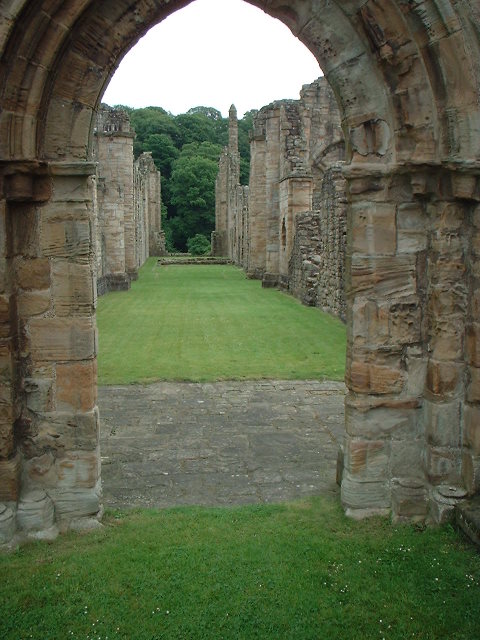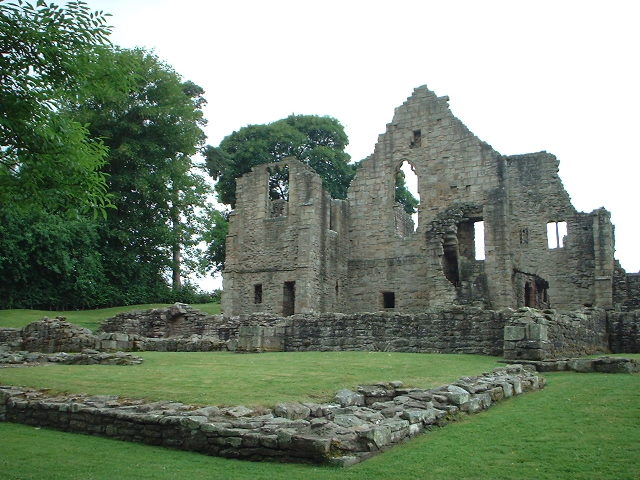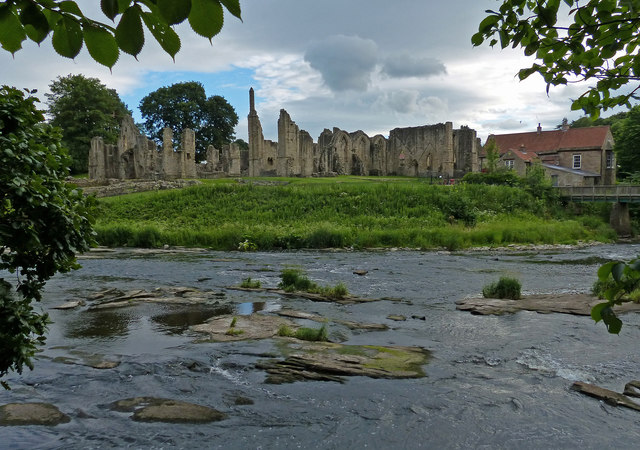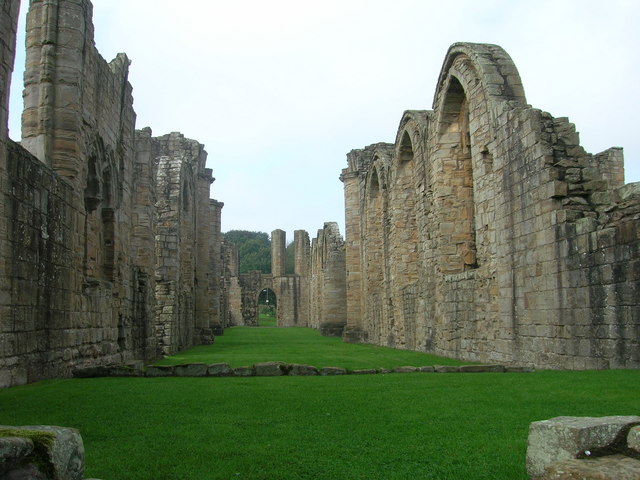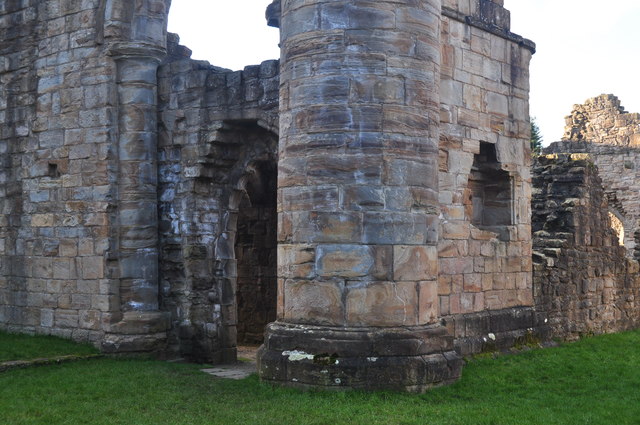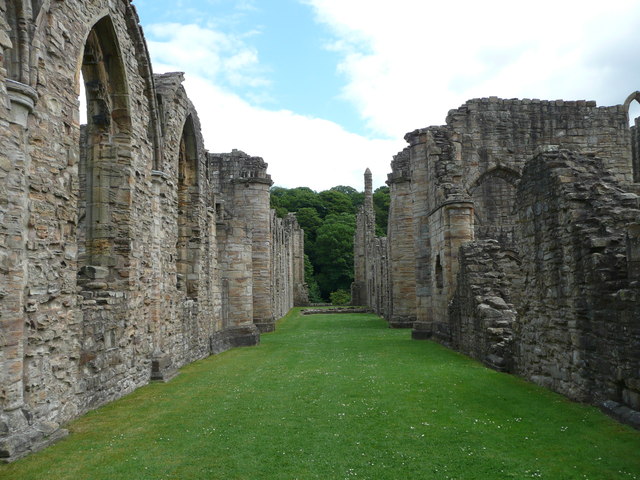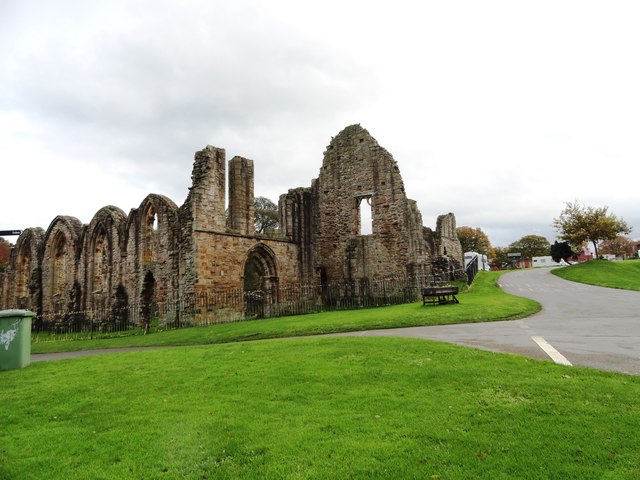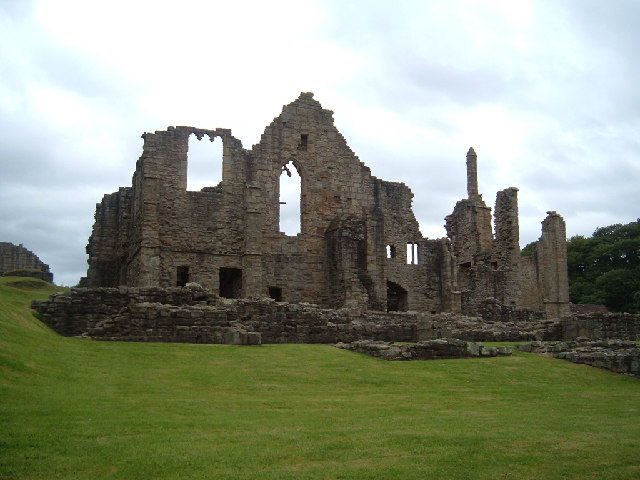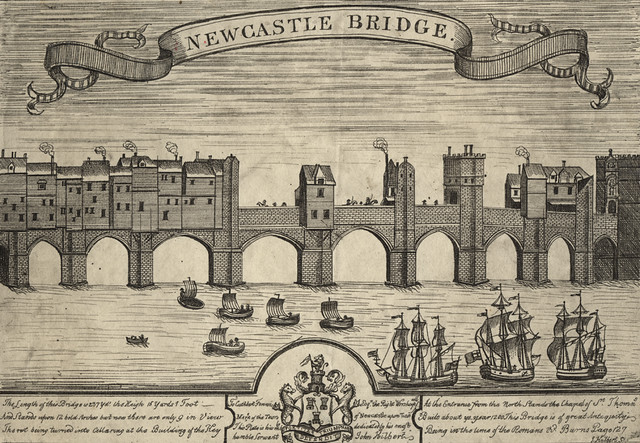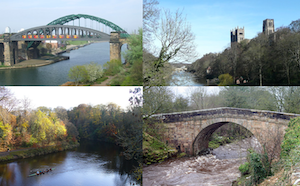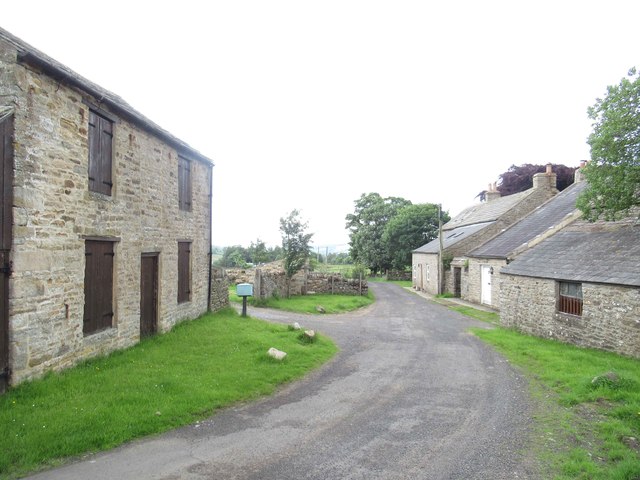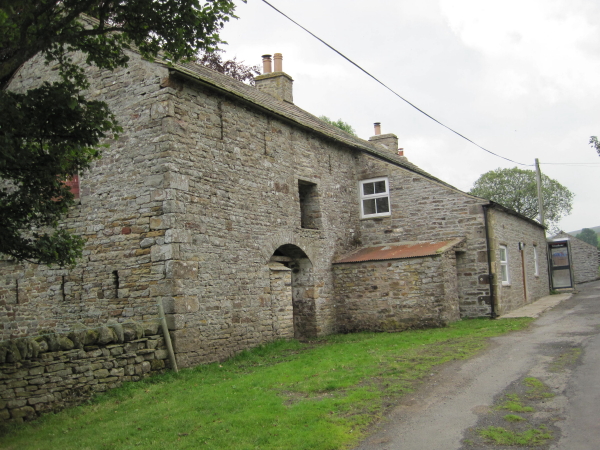Topics > Heritage Sites > Finchale Priory
Finchale Priory
Finchale Priory was a Benedictine priory built in the 13th-century. The ruins of the Priory are located by the River Wear, 3 miles north-east of the city of Durham. The Priory is Grade I listed on the National Heritage List for England.
Finchale Priory (pronounced finkle) sometimes referred to as Finchale Abbey was a 13th-century Benedictine priory. The remains are sited by the River Wear, four miles from Durham. It is Grade I listed on the National Heritage List for England.
Building history
There are some remains of the early 12th-century stone chapel of St John the Baptist, the site of Godric of Finchale's burial, built some time around the end of Godric's life. Some of the temporary buildings, erected for the first prior and his monks sent to establish the Priory some twenty years after Godric's death, still exist. The monastic complex was built in the latter half of the 13th century, with alterations and additions continuing for the following three hundred years.
There are many excellent examples of heavily decorated capitals on the original arcade columns, tracery in the filled-in nave arches of the church, and on the south wall is a double piscina and two carved seats of the sedilia.
The buildings and immediate grounds are managed by English Heritage. The precinct, through which the site is entered, is now a caravan park.
Early history
Godric came to live on the eventual site of Finchale Priory in the early twelfth century, creating a hermitage dedicated to St John the Baptist. Godric’s biographers recorded that he lived an ascetic life on this site for 50 years, living and sleeping outside and rejecting expensive cloth and plentiful food. It is said that Godric slept on the ground with only stones and branches as his furniture. Godric’s life was first recorded by a monk of Durham, thought to be named either Nicholas or Reginald. Godric’s last years were marred by extreme sickness, perhaps a result of his difficult life-style. For almost a decade before his death on 21 May 1170 Godric was confined to his bed and cared for by monks of Durham. He was initially buried in Durham but his remains were eventually moved to the church at Finchale.
Priory foundation and history
After Godric’s death, two monks of Durham moved to Finchale, where there was already a church, mill, dam and fish pond. The site has been a dependency of Durham Cathedral since 1196, the year in which the chapel hermitage became known as Finchale Priory. In this year it was endowed by Bishop Hugh Pudsey and his son Henry in order to support the priory’s eight monks and prior. Bishop Pudsey appointed Thomas, formerly sacrist of Durham, as prior. While Finchale was never to become a wealthy house, it was the richest of Durham’s dependencies by the mid-15th century.
The church remained in various stages of construction for over a century after 1196. The most significant change following its completion was the narrowing of the nave and the chancel during the 1360s and 1370s through the removal of the aisles. Various construction projects lasted at Finchale through the mid-15th century as the church dates in part from around 1200 and in others from the late 14th century. The Hospitium (guest house) and a part of the prior’s house date from the mid-15th century.
Finchale remained a priory until the dissolution of the lesser monasteries in 1536. During this time Finchale had 52 priors and accounting records still exist for much of the period 1303-1535. During much of its history the priory served as a rest facility for the monks at Durham as four Durham monks would travel to Finchale for a three-week period to join the four monks in residence. During these periods of rest the Durham monks would alternate between fulfilling their religious services as usual and exercising more freedoms (in terms of leaving the monastery) than they usually enjoyed.
List of the Priors of Finchale
Visit the page: Finchale Priory for references and further details. You can contribute to this article on Wikipedia.

from http://www.english-heritage.o…
Finchale Priory - English Heritage
- "The very extensive remains of a 13th century priory, founded on the site of a retired pirate's hermitage. Part of it later served as a holiday retreat for the monks …
Added by
Simon Cotterill

from Newcastle University (youtube)
Knights Templars Meet Old Ruins Aka Ascension Day Service At Finchale Priory (1939)
Pinned by Simon Cotterill

Co-Curate Page
English Heritage
- English Heritage locations in Northern England: Site (click for details) Overview Location Auckland Castle Deer House Near Bishop Auckland County Durham Aydon Castle Near Corbridge Northumberland Barnard Castle …

Co-Curate Page
Durham (City)
- Overview History of Durham Timeline Map Street View Early history Archeological evidence suggests a history of settlement in the area since roughly 2000 BC. The present city can clearly …

from Youtube (youtube)
Finchale Priory - DJI Phantom 3 Standard Drone footage
Pinned by Simon Cotterill
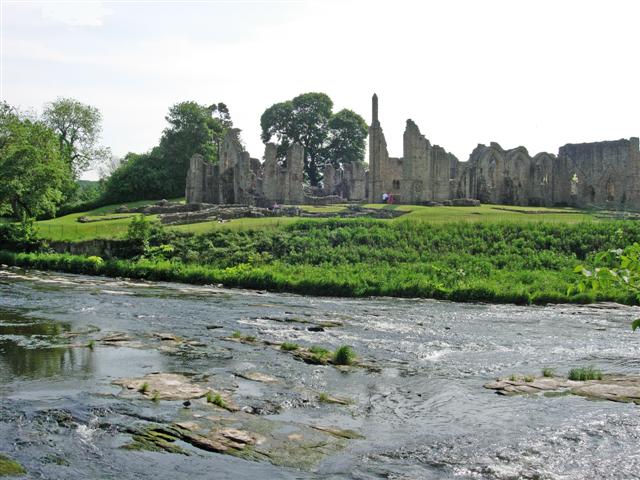
from Geograph (geograph)
Finchale Priory, seen from Finchale Banks (across the River Wear)
Pinned by Simon Cotterill


from http://www.english-heritage.o…
Finchale Priory - English Heritage
- "The very extensive remains of a 13th century priory, founded on the site of a retired pirate's hermitage. Part of it later served as a holiday retreat for the monks …
Added by
Simon Cotterill

from Newcastle University (youtube)
Knights Templars Meet Old Ruins Aka Ascension Day Service At Finchale Priory (1939)
Pinned by Simon Cotterill

Co-Curate Page
English Heritage
- English Heritage locations in Northern England: Site (click for details) Overview Location Auckland Castle Deer House Near Bishop Auckland County Durham Aydon Castle Near Corbridge Northumberland Barnard Castle …

Co-Curate Page
Durham (City)
- Overview History of Durham Timeline Map Street View Early history Archeological evidence suggests a history of settlement in the area since roughly 2000 BC. The present city can clearly …

from Youtube (youtube)
Finchale Priory - DJI Phantom 3 Standard Drone footage
Pinned by Simon Cotterill

from Geograph (geograph)
Finchale Priory, seen from Finchale Banks (across the River Wear)
Pinned by Simon Cotterill
List number: 1159246
County: County Durham
Post code: DH1 5SH
Wikipedia: Finchale Priory
Grid ref: NZ2964447123
